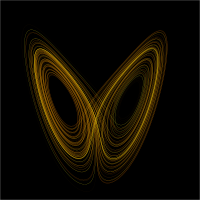
Photo from wikipedia
Motivated by the presence of deep connections among dynamical equations, experimental data, physical systems, and statistical modeling, we report on a series of findings uncovered by the authors and collaborators… Click to show full abstract
Motivated by the presence of deep connections among dynamical equations, experimental data, physical systems, and statistical modeling, we report on a series of findings uncovered by the authors and collaborators during the last decade within the framework of the so-called Information Geometric Approach to Chaos (IGAC). The IGAC is a theoretical modeling scheme that combines methods of information geometry with inductive inference techniques to furnish probabilistic descriptions of complex systems in presence of limited information. In addition to relying on curvature and Jacobi field computations, a suitable indicator of complexity within the IGAC framework is given by the so-called information geometric entropy (IGE). The IGE is an information geometric measure of complexity of geodesic paths on curved statistical manifolds underlying the entropic dynamics of systems specified in terms of probability distributions. In this manuscript, we discuss several illustrative examples wherein our modeling scheme is employed to infer macroscopic predictions when only partial knowledge of the microscopic nature of a given system is available. Finally, we include comments on the strengths and weaknesses of the current version of our proposed theoretical scheme in our concluding remarks.
Journal Title: Advances in Mathematical Physics
Year Published: 2018
Link to full text (if available)
Share on Social Media: Sign Up to like & get
recommendations!